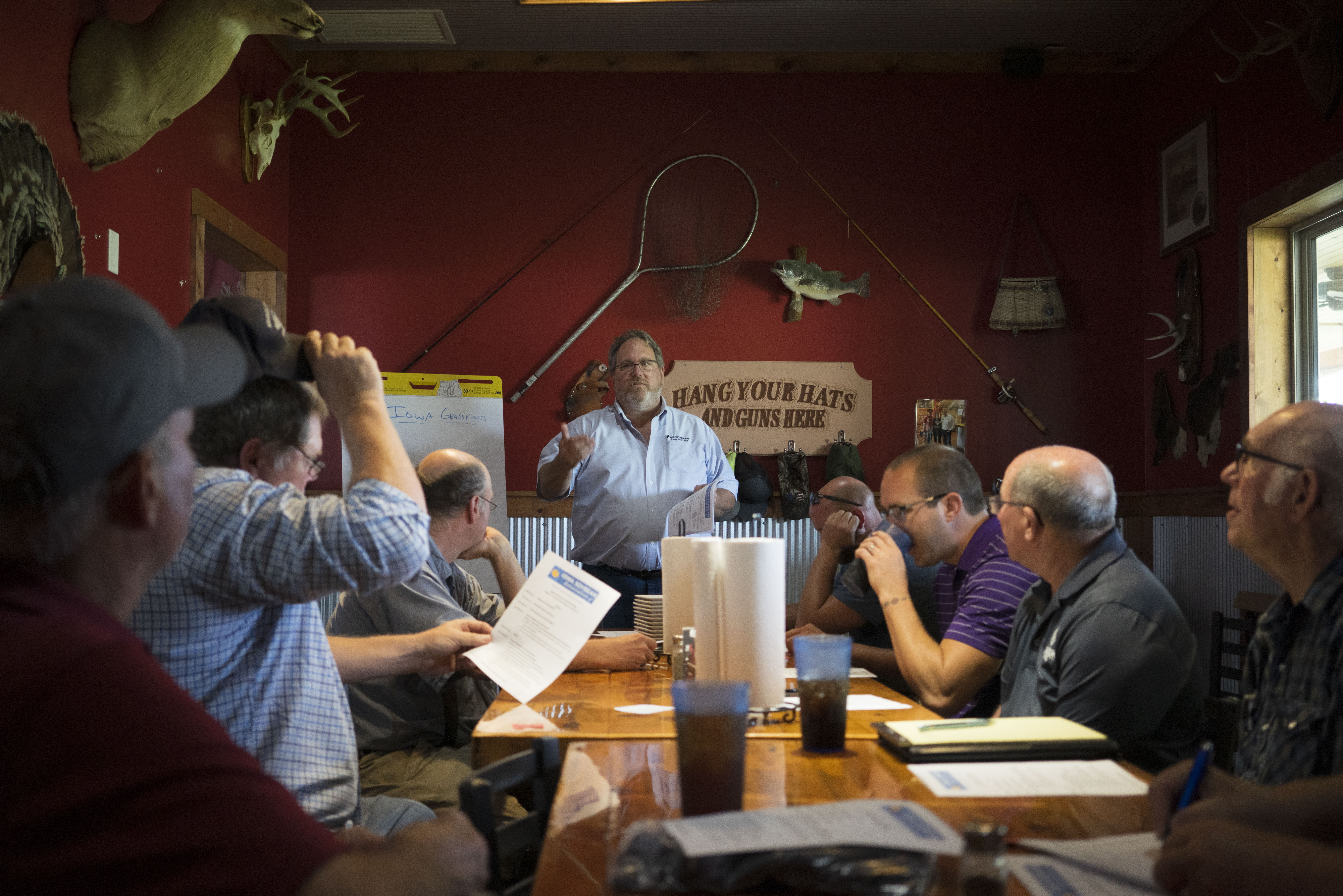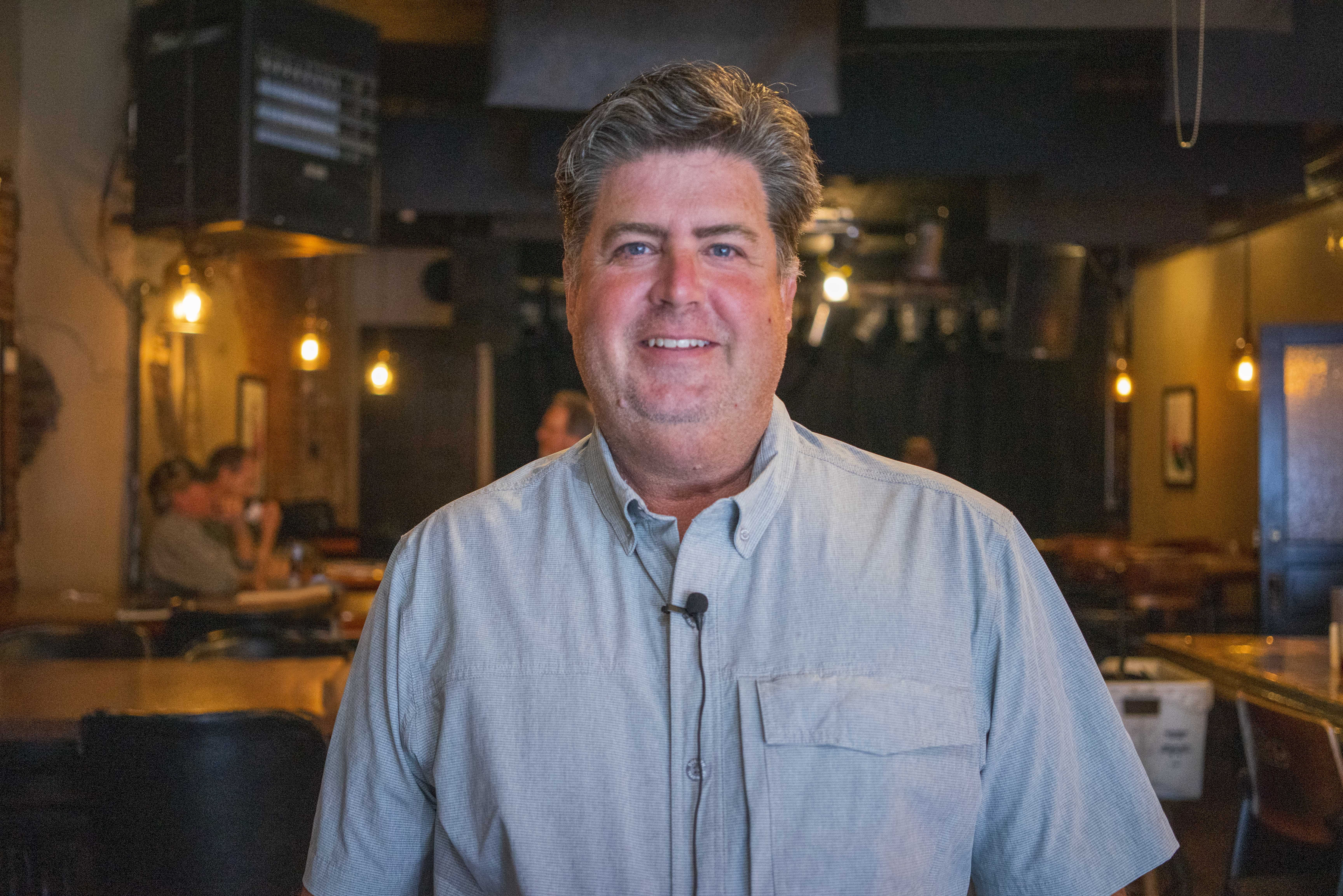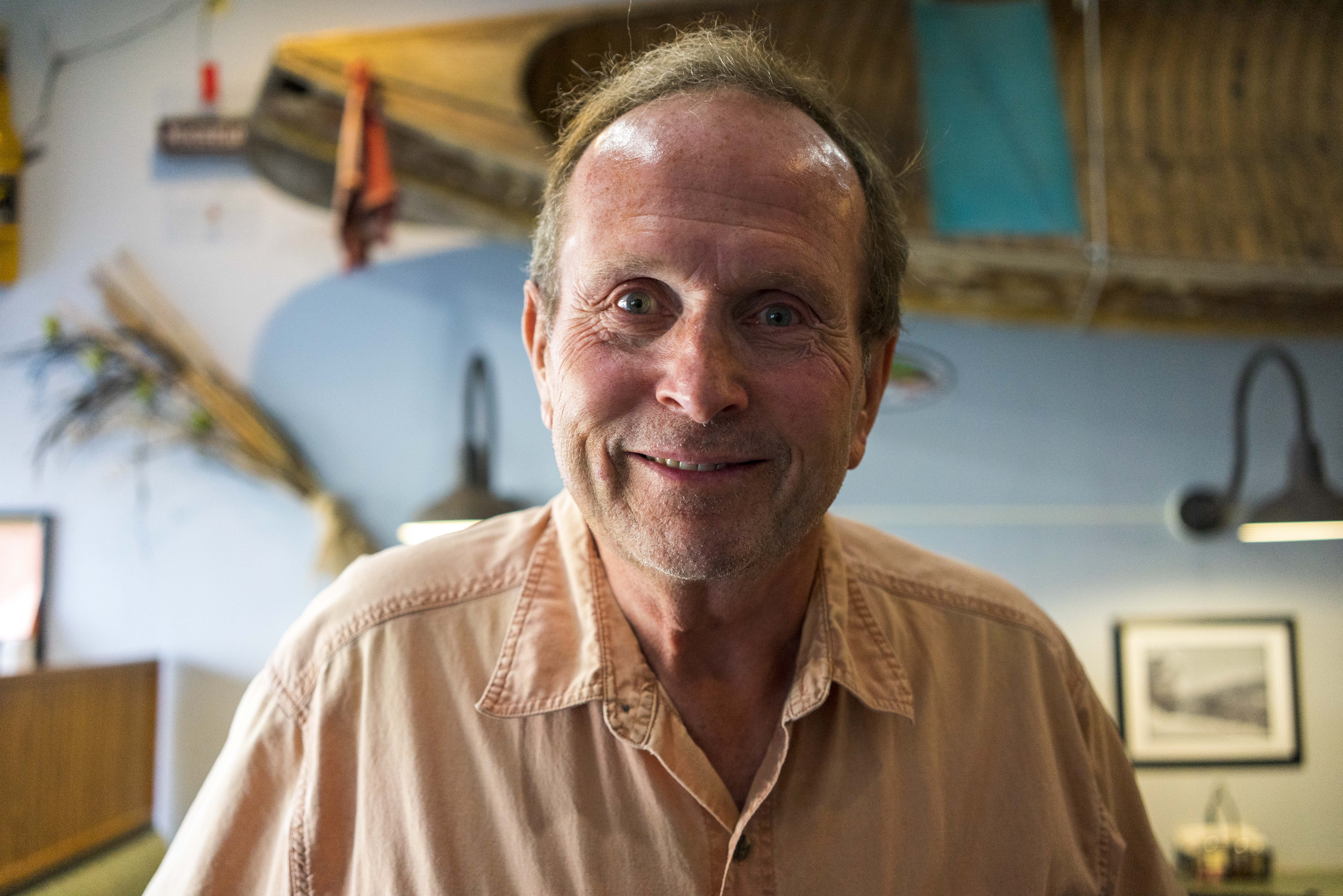
ISA RCFI Director Roger Wolf sits down with western Iowa farmers in Oakland during the penultimate Grassroots Town Hall meeting. (Photo credit: Joseph Hopper/Iowa Soybean Association)
Farmer voices, ideas emerge as Regional Grassroots Town Hall series concludes
September 16, 2021 | Joseph Hopper
Dozens of farmers met with Iowa Soybean Association staff this summer for open and honest discussion reviewing the current conditions of farming and the future they’d like to build for upcoming generations during the Regional Grassroots Town Hall series. The series concluded with its eighth and final town hall meeting in Carroll this week.
ISA Research Center for Farming Innovation (RCFI) Director Roger Wolf moderated the discussions and hopes the tradition of farmer-led listening sessions will continue annually. He said the town hall series accomplished two main goals: to build out demand for continuing investment in soil and water conservation by empowering grassroots leadership, and to plan investment for future ISA projects leveraging the ground level input.
“Without a doubt there are unprecedented public and private investments currently being made across Iowa to improve the long-term productive capacity of Iowa’s agricultural landscape as well as working to address the offsite impacts from agricultural land use and management,” Wolf said. “And while this statement may come as a surprise to some folks, we believe tapping grassroots community leaders is the front foundation requirement for building out a brighter future for Iowa.”
It is clear; however, that investments alone will not fix the future challenges facing Iowa on natural resources and the environment, Wolf said.
“We believe engaging local leaders is key in terms of realizing the future as well.”
There’s a historical legacy of this in the state, according to Wolf. After hearing from farmers and community leaders during the town hall series to discuss their communities, visions for the future and what is working or not working today, the RCFI director said it’s about the people and unique attributes of the places that make investments work best, with the integration and coordination of systems creating win-win opportunities.
Sharing their stories
Iowa farmers have been volunteering their voices on the record to discuss conservation practices, the environmental needs of their regions and the types of programs or projects they’d like to see appear in the future to alleviate those needs. Prior to the upcoming public showcase of these voices, two excerpts can be found below. More information will be available on the ISA website as the project develops.

ISA Treasurer, District 6 Director and farmer Dave Walton, of Wilton
What conservation practices have you implemented on your farm that other farms and farmers could benefit from?
“We started out with the basics and switched from conservation tillage to no-till. Then, we’ve transitioned to cover crops and kind of target the areas where it helps the most. We use a mix of cover crops and with that it also enhances our livestock operations. We graze those cover crops in the spring and the fall and it helps save (money) on hay. We get a little bit more value out of the cover crop.”
What do you see as a county or regional need for improving water quality and soil health that should be addressed?
“One of the regional needs: especially water quality. We’re in the area of the state there’s a lot of water around. There’s a lot of water sheds, ponds; we flow right into the Mississippi River here. Half a block away we have the largest watershed in North America and we try to protect that as best we can. I’d like to see a more regional approach where we really think about water and what runs off our soil and we keep in mind that everything we do on that ground eventually ends up in the Mississippi.”

ISA farmer member Bill Drury of Clarion
What conservation practices have you implemented on your farm that other farms and farmers could benefit from?
“When my grandfather and father bought our farm back in ’43 they were the second farmers in Wright County that installed terraces and grass waterways with the bulldozers and earthmovers left over from World War II, every district in the state of Iowa received these. In ’65 we started no-tilling.
It’s a course of habit. We have approximately a mile of terraces on our ground, maybe a quarter-mile of grass waterways. We no-till, to strip-till to cover crops the past six years now with rye and oats. With the soybean association and the Iowa Department of Agriculture and Land Stewardship we put in a saturated buffer — 1,000 feet of tile — to clean our water before it enters into our tributary that goes directly into the Iowa River.”
What do you see as a county or regional need for improving water quality and soil health that should be addressed?
“We need to have goals. Until we can address that there is an actual problem and that there is soil erosion, there are those 100-year storms that happen more readily than once in a hundred years, then we aren’t going to be able to address the issue. Unless we understand erosion is actually here, there isn’t much help.”
RCFI reviews the data
Still early on in the process to review and reflect upon the town hall series, Wolf identified three areas RCFI is considering investment based on the feedback during the grassroots town halls.
Water and watershed projects
“Watershed projects hold a lot of promise for organizing efforts to improve soil health and water quality down stream,” Wolf said. “Some of the common features of good watershed projects include broad stakeholder support upstream among the ag community and active engagement with downstream and often urban stakeholder interests.”
Having solid information and assessments of the current condition and building a plan for shovel-ready projects has been a key for securing additional resources, he noted.
And while there are some good examples demonstrating practices and information on how this work occurs, local watersheds lack the necessary resources to take projects to full scale implementation, Wolf said.
“Also having local boots on the ground is also key for success,” he said. “Without additional financial investment, however, many acres go untreated, and opportunity to really move the needle for outcomes downstream are being missed.”
Finding opportunities to engage younger farmers
Integrating crop and livestock systems may hold much promise for younger farmers, Wolf said.
Local leaders noted there were barriers to incorporating cover crops into cropping systems. Namely, increasing infrastructure for seed production, planting and termination services.
“Increasing the bandwidth in these areas may mean more opportunities for people looking to get into agriculture,” he said.
Leveraging current project work
Wolf said RCFI will take the information and experiences from farmers and others participating in the town hall series to explore and expand projects.
“We hope to advance projects that take dedicated small scale soil health research plots and extend them to whole field experimental evaluations to study real world response,” Wolf said. “We then can create a support network providing extension and outreach to farmers and opportunities to change practices on their operations.”
The end goal: provide opportunities for Iowa farmers.
“This is a research-based approach to refining cropping systems and takes a fair amount of coordination and commitment to adhering to an experimental design, coordinating data collection, and using data analytics to uncover information and insights into value opportunities for farmers.”
Back